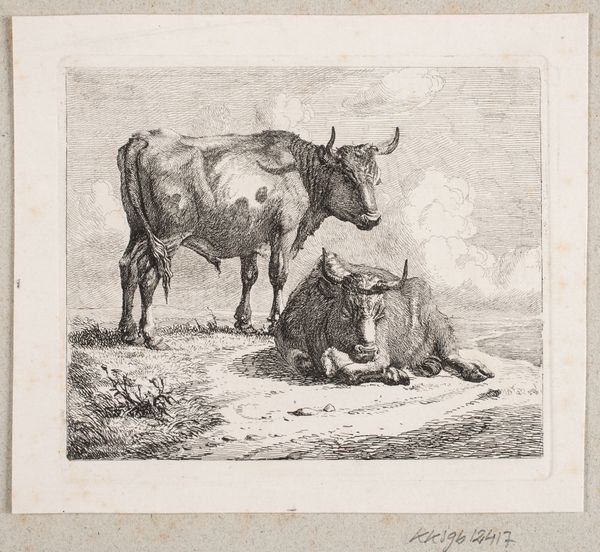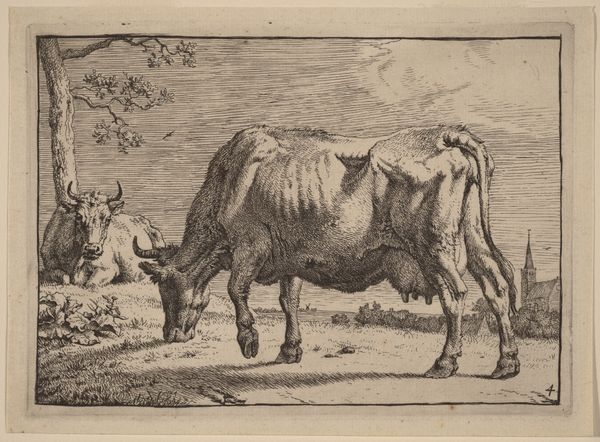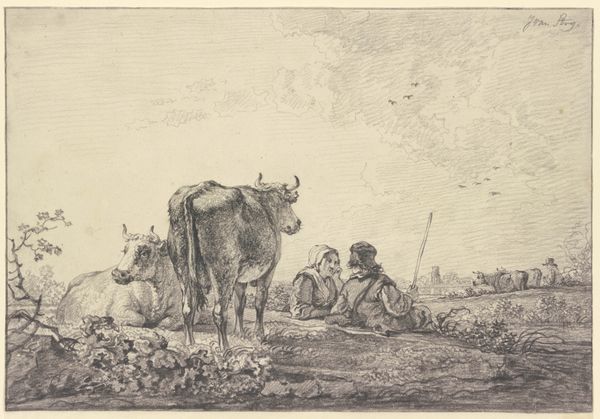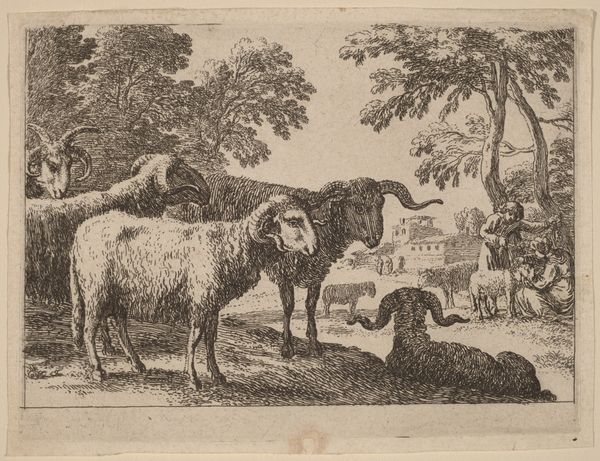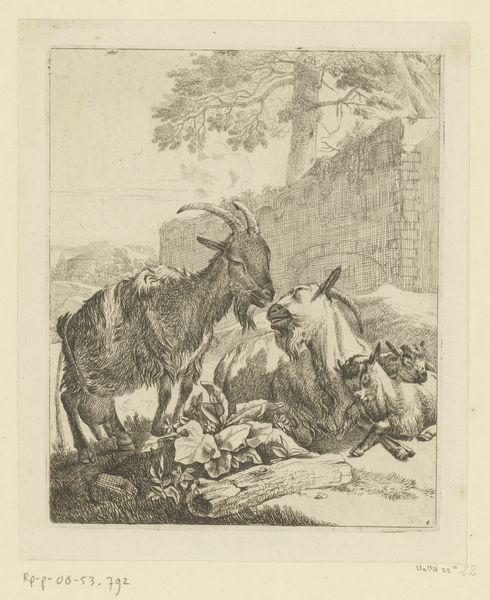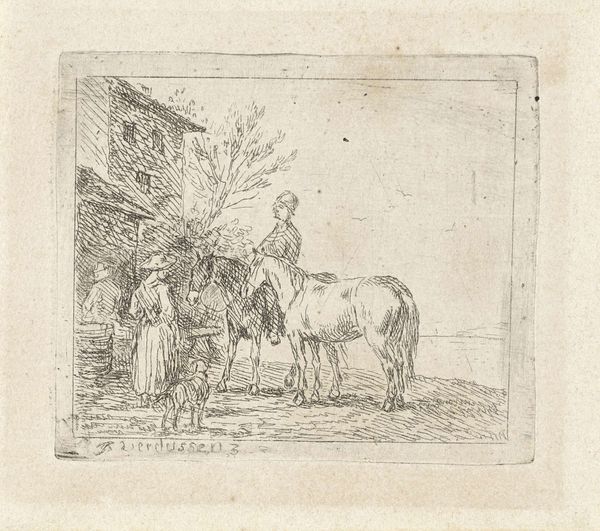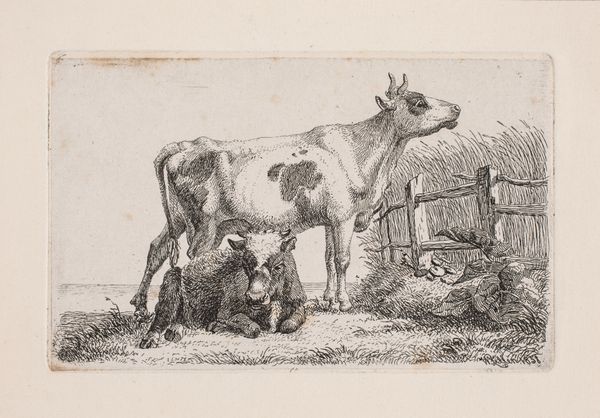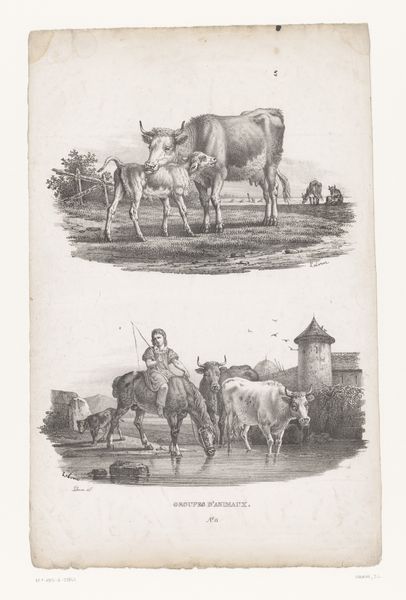
etching
#
baroque
#
etching
#
old engraving style
#
landscape
#
figuration
#
genre-painting
Dimensions: height 194 mm, width 142 mm
Copyright: Rijks Museum: Open Domain
Editor: Here we have "Seated Shepherdess with Cow, Goat, and Ram" by Johann Heinrich Roos, dating somewhere between 1641 and 1685. It's an etching, currently housed in the Rijksmuseum. The details are incredibly fine; you can almost feel the texture of the stone wall. What do you make of it? Curator: I find this work fascinating when considered through a materialist lens. Roos's choice of etching—a process reliant on acid, metal plates, and intense labor—speaks volumes. The very *making* of the image underscores the socioeconomic context of its production and consumption. Think about the time, resources, and skill needed to create this plate. Editor: So you're saying the *process* is as important as what's depicted? Curator: Absolutely. Roos isn’t just showing us a pastoral scene. He's revealing a relationship with the viewer built upon a hierarchy of making, and ownership of that process. This was likely a luxury item for a discerning collector, showing an appreciation of landscape while removed from it, purchased from those very means it seeks to idyllicize. Consider the materiality—the paper, the ink—as commodities. Editor: I never thought about an etching in terms of commodity before! I tend to get wrapped up in just admiring the image itself, not the means of making it, and those social aspects involved. Curator: Exactly. We can ask, how does the print medium itself shape our understanding of labor and leisure here? Does the detailed execution legitimize or romanticize this view of country life and animal husbandry? Where do these animals eventually *end* up in the chain of labor, material, and production? Editor: It certainly gives me a lot to consider. Thanks for highlighting the role of material processes in appreciating this pastoral scene. Curator: My pleasure. Always look closely at *how* art is made – it re contextualizes our understanding.
Comments
No comments
Be the first to comment and join the conversation on the ultimate creative platform.

